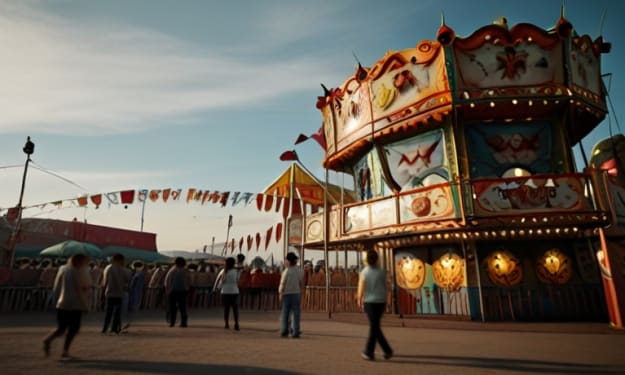Top Five Scariest Mental Hospitals
Relics of a not too distant past

Dark histories filled with brutality and mistreatment stain the earth of many mental hospitals throughout the United States. Misinformation coupled with corruption created a general misunderstanding of mental illness, and as a result, a misunderstanding of the proper procedures to administer care. Doctors and nurses subjected these mental health patients to heinous mistreatment, often times causing emotional, psychological, or physical damage far worse than what they were initially admitted for.
These mental hospitals have truly put their patients through strange, and sometimes horrible, and disgusting measures in order to cure them. Its important to acknowledge this twisted past as important context for how and why people with mental illness are treated like they are today. Looking into these hospitals, we can truly understand and study just how ignored and mistreated people with mental illnesses were by society.
Number 5: Overbrook Asylum
Also known as the Essex County Hospital Centre, this hospital suffered from problems within the administration, further complicated by their problems of overcrowding. It's construction started in 1896, when a whopping 325 acres of land was purchased by Newark City, New Jersey in order to prevent the overcrowding of their only hospital.
Due to its ginormous size, it was successful in this mission at first. Years passed by after the hospital's construction without issue, however in 1917 Essex County Hospital Centre suffered a failure with their boilers, resulting in 24 of their patients freezing to death, overnight in their beds. At this point in time, it was only a hospital and not a mental institution, which was promptly changed during the 1920's. After that change, the hospital quickly swelled to full capacity.
Full capacity in this case was massive. The entire 325 acres was used to its fullest, with the mental hospital sporting its own train station that it used regularly for transporting coal, the facility's primary fuel source. Patients were given their own crops to tend - the massive fields offering rich harvests for them. This was the hospital's primary source of food, but the patients as well supplied themselves with dairy products from cattle they raised on the hospital land. The eerie little town as well had a bakery to get treats or bread from, and a firestation in case of any emergencies. They as well had a semi-professional baseball team that would occasionally compete with other teams in the area.
This is a stranger example of hospitals in the past giving their patients more freedom and allowing them to almost rehabilitate by themselves.
Number 4: The Danvers State Insane Asylum
This bat-shaped, gothic building was fictionalized in H.P. Lovecraft's 'The Thing on the Doorstep', which served as the inspiration for Batman's Arkham Asylum. Much like what is depicted in popular culture, the treatment of patients in this facility was crude and borderline experimental.
First opening to the public in 1878, it quickly gained traction as one of the first mental hospitals of its kind. By 1881, the 450 patient capacity was already exceeded by 200 people - the start of a worrying trend. Gradually, that number began to increase until they hit 1,137 patients. At this point in 1903 they finally purchased an additional 100 acres. By the 1930's, the number of patients had doubled while the number of administrative staff remained the same. This sharp increase in hospital population as well as a lack of staff, lead to the systematic abuse of inmates - starting with restraints. This marks a departure from the declaration made by superintendent Dr. Charles Page in 1890, which stated mechanical restraint to be unnecessary in the face of mental illness.
As the number of patients increased, staff needed a fast way to pacify and restrain these individuals, so they started using straitjackets as a means to accomplish that. Still, the number of patients was too large to manage, and it wasn't out of the ordinary for naked, helpless patients to be out roaming the halls, or for people who couldn't wash or take care of themselves to be left alone. People were actively getting worse at this hospital.
To further keep order and adapt to the ever increasing number of patients, lobotomy was introduced in 1948, with shocktherapy coming not too long afterwards in 1950. This would sometimes give patients brain damage and prevent them from acting out in ways that were disruptive or maladaptive. It was not uncommon to see patients mindlessly stumbling through the halls or staring blankly at walls for extended periods of time. The poor funding eventually lead to increasingly horrible conditions until it was gradually shutdown, the final building closing in 1992.
Number 3: Trans-Allegheny Lunatic Hospital
This hospital's creation was spearheaded by Dr. Thomas Kirkbirde, who eventually would establish the American Psychiatric Association. The construction process for this mental hospital was long and arduous, but in 1864 they first admitted patients. Construction for the hospital completely finished in 1881, the same year an influx in mental health diagnoses lead to intense overcrowding, the 250 patient hospital swelling by over 500. This overcrowding continued to plague the hospital until the 1980's, during which patients were abused and mistreated in terrible ways.
Firstly, Trans-Allegheny Lunatic Hospital was similar to Overbrook Asylum (number 5) in that they would allow prisoners free roam over a large (666 acres, ironically) area. This area had a farm, dairy farm, chapel, waterworks, and a cemetery which would allow the hospital to both be self sustaining and naturalistic in their approach to healthcare. The key difference being that most of the patients were so mistreated that they could not even leave the facility.
Many patients did not have access to heat or furniture and were forced to spend freezing nights on the ground, as there was not enough funding or staff attention to properly provide them with beds or makeshift alternatives. Cages and restraints were used for patients with behavioural issues. Sanitation as well was heavily neglected by staff as time went on, an issue particularly worse for those who are confined. In order to help manage some of these problems, lobotomies were used as a solution. The West Virginia Lobotomy Project started in the 1950's - a combined effort between Dr. Walter Freeman and the state of West Virginia. Over 4,000 lobotomies were performed under Walter Freeman, every single one a completely unnecessary practice devised to lower the hospital population count. The intention was to use a highly fatal method of lobotomy to simulatenously fix a high hospital population count, prevent behavioural outbursts in the patients that lived, and uncover new scientific breakthroughs. Ultimately, the hospital was closed in 1994 due to changes in patient treatment.
Number 2: Bloomingdale Insane Asylum
In 1821, the Bloomingdale Insane Asylum opened in Manhattan, New York with approximately 80 patients. They began accepting patients that were both mentally and physically ill, but quickly enough the number of mentally ill patients rose. In the 1840's, the hospital started to transition towards only accepting patients who were wealthy, instead sending the poorer ones to New York City Lunatic Asylum. In 1872, a New York Journalist named Julius Chambers, with the help of his friends, decided to conduct an investigation of his own into Bloomingdale Insane Asylum. They managed to get him admitted into the facility, and there he interviewed many different patients on their experiences. He published a series of articles detailing the abuse and mistreatment that they had faced, which resulted in a number of administrators getting fired as well as a dozen patients being released from custody.
There were a handful of similar stories relating to how completely sane patients were twisted and pushed towards being admitted. One of which was Louisa Wolfsohn, who spent 14 months at Bloomingdale Insane Asylum before transferring to the Kings County Asylum. After Wolfsohn's transfer, an attendant at Bloomingdale Insane Asylum testified that a doctor confessed to her that Wolfsohn was completely sane the entire time, and that her admittance was a matter of "Subduing her pride". Her brothers and father being the people who sent her there after having an argument. Commodore Richard W. Meade as well was sent to the hospital after not giving his blessings to his daughter and her suitor. One of the most noteworthy of them might have been Mary McCabe, a nun who was sent to the asylum by her convent after she accused a priest of making unwanted advances.
The articles as well revealed how disgusting the inside of the facility was, and just how horribly they treat their patients. Constant abuse and neglect was claimed to have killed patients, and it was made clear that there were serious administrative issues. One patient suffered permanent damage to her mouth and throat due to staff trying to force-feed her. Patients were regularly beaten when attendants would get angry. 8 years later, Bloomingdale Insane Asylum started the process of shutting down, officially closing in 1889.
Number 1: Creedmoor Psychiatric Centre
The Creedmoor Psychiatric Centre was understaffed and overcrowded, which resulted in the violent patients kidnapping, murdering, and raping staff and other patients. It first opened to the public in Queens, New York in 1912. 32 patients were initially admitted and this number rose to 150 by 1918. Such a sharp increase in patients was already too much for staff to handle, and some of them were forced to sleep in abandoned national guard barracks. By the 1950's, this number rose to 7000.
In the 1940's, there were outbreaks of dysentery in two different wards due to unsanitary conditions and neglect. These conditions steadily worsened as the population would increase. In 1953, two mentally unstable patients overpowered a staff member and escaped Creedmoor hospital - disappearing into the public and never being discovered. The crime by 1974 had reached extraordinary numbers, with 3 rapes, 22 assaults, 52 fires, 130 burglaries, 6 suicides, a shooting, and a full hospital wide riot. In 1984, a staff member beat an inmate wearing a straitjacket to death with a baton.
The conditions there were so dangerous for everyone involved. Staff members would report how they would be locked in rooms that have violent offenders moved directly from prison, as well as violent and mentally unstable patients. It became so dangerous at a certain point that workers had to smuggle weapons in with them for self defense purposes. In 1977, a man who violently murdered his wife and child managed to escape the facility and remain uncaught. Eventually, new medications to treat mental illness began to be produced and deinstitutionalization started becoming a more common government practice, which lowered the number to 450 as of 2006. Creedmoor Psychiatric Centre remains open.
About the Creator
Larry Peemier
Hi - I'm Larry Peemier.






Comments
There are no comments for this story
Be the first to respond and start the conversation.